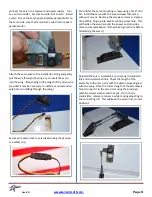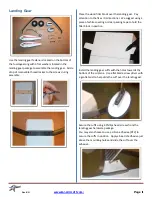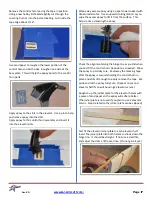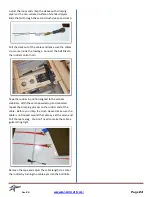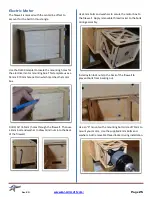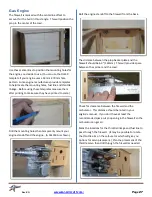
Rev 2.0
www.AJ-Aircraft.com/
Page 21
Rudder
The rudder control can be configured as a push-pull
system or as a pull-pull cable system. See the
configuration options listed on page 4.
Inspect the packing material carefully for the rudder
hinge pin. It is typically taped to the inside of the box.
Push-Pull Rudder Control
A push-pull system will use the hardware provided in the
elevator parts bag.
Notice that the control horns for the push-pull system
shown at the top of this picture are longer then the pull-
pull control horns.
The rudder is built with control horn slots for the push-
pull control system and the pull-pull control system. The
blue painter’s tape indicates the control horn locations.
The push-pull control horn slots are located near the
bottom of the rudder.
The picture below shows a mockup of the rudder push-
pull system. The installation process of the servo and
control horn is the same as the ailerons and the elevator.
The pull-pull cables can be removed and the covering will
need to be patched with covering or a smartly placed
decal.



